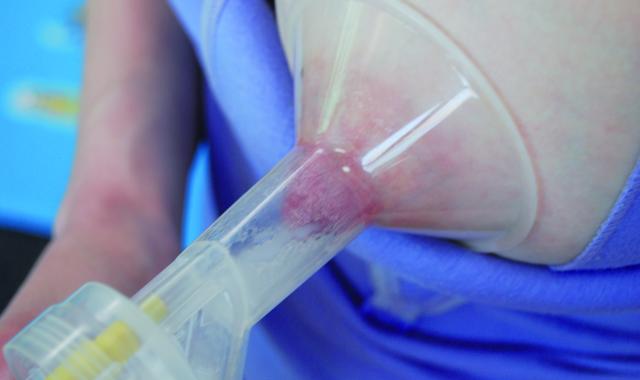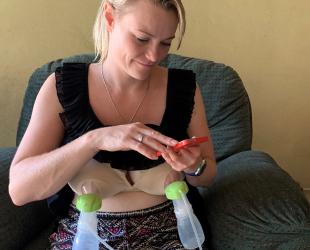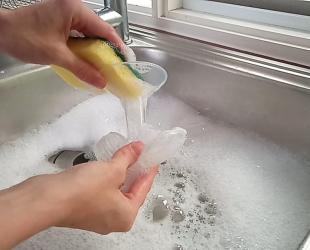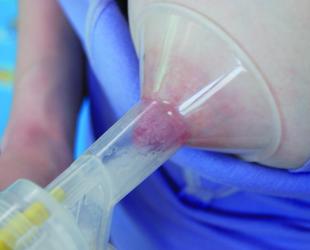Whatever your reason for expressing, there's a pump that's right for you.

Many breastfeeding mums will express their breastmilk at some stage. Sometimes it can be confusing to know which type of pump will best suit your needs.
What are your needs?
Before you buy or hire a breast pump, the first things to consider are your reasons for expressing and how often you plan to pump.
A hospital grade pump is recommended if:
your baby is unable to breastfeed yet (e.g. born too early or unwell)
you are expressing for all your baby's feeds (exclusively expressing)
you are returning to work while your baby is young and need to pump several times a day
you are trying to greatly increase your supply
For many mums who express less often, a personal electric pump or hand pump will be adequate. Some choose to hand express instead of using a pump.
You will get the most benefit from a pump that closely matches your personal circumstances.1
Helping you choose a pump
Different types of pumps are suited to different situations. To help you with your decision, think about:
- the length of time you might need to use a pump for, e.g. days or months
- how often you may need to express during that time
- any special features you may need, such as battery power or a carry case
- your budget
- access to spare parts, support and servicing in your area
If you would like more information on choosing a breast pump, talk to your local breastfeeding volunteer or call the National Breastfeeding Helpline.
Become a member of ABA to hire a pump for half price.
Manual (hand) pump
- A simple option with no motor.
- Remove milk from one breast at a time by using your hand to squeeze the handle repeatedly.
- Cost effective and easy to clean.
Examples
Ardo Amaryll Start
Ameda One-Hand Manual
Personal electric - basic
- A basic electric pump with few features.
- Typically allows you to pump one breast at a time while connected to power.
- A cost-effective option if you already have a good milk supply and only need to express every so often.
- Simple to use but may not remove milk as quickly as more premium options.
Examples
Ardo Calypso Single
Personal electric - wearable
- A convenient option with small motorised collection cups that fit inside your bra.
- Designed for discreet, hands-free pumping, allowing you to tackle other tasks while you express.
- Quality and price vary, and lower quality models may not have a strong enough motor to remove milk well.
- Extra features may include a carry case, milk storage containers and inserts to get the best fit.
Examples
Lacevo S70 - Endorsed by ABA
Ardo Melia
Personal electric - premium
- A premium electric pump with a strong motor and a battery for portability.
- Typically allows you to pump both breasts at once with a double collection kit.
- Extra features may include Bluetooth or Wi-Fi controls, a long battery life, and the option to save your preferred settings.
- Good for increasing or maintaining supply when apart from your baby.
- A more expensive option so make sure you aren't paying for features you don't need.
Examples
Ameda Mya Joy
Ardo Calypso Double Plus
Ardo Alyssa Double
Hospital grade (multi-user)
- A powerful option designed to cope with many years of use by multiple users.
- Available to hire from ABA, hospitals and pharmacies.
- Ideal for exclusively expressing or building up supply for a baby who is born early or unwell.
- The 'closed system' means milk only touches the collection kit, which is replaced for each user.
Examples
Ameda Pearl
Ameda Platinum
Ardo Carum
The right pump for your situation
Usage type and duration | Occasional use(once a day or less) | Frequent use(more than once a day) | Exclusive expressing(especially if expressing to maintain or build a full milk supply) |
Short-term(less than 4 weeks) | Manual (hand) | Hospital grade | Hospital grade |
Medium term(4 weeks or more) | Manual (hand) | Personal electric | Hospital grade |
| Personal electric | Hospital grade | ||
Long term(a few months or more) | Manual (hand) | Personal electric | Hospital grade |
| Personal electric | Hospital grade |
Breast pump flanges
A breast pump flange (or shield) is the clear plastic piece that fits over your nipple. The flange forms a seal against the skin of your areola. When you express, the suction of the pump gently draws your nipple into the tunnel to extract the milk. If needed, flanges can be warmed before use to help the milk to flow.2

Breast pump flanges come in many different sizes. Using the correct size helps to ensure pumping is comfortable and you can express the milk milk.3,4 You may need a different size flange for each breast.
Many of the women in a recent small study had improved comfort and could pump more milk when using a smaller-fit flange,5 but this won't be true for all women. The width of your nipples may also change over time so you may need to change your flanges if they no longer fit well.
Finding the right size flange
- Measure the width of the tip of each nipple and choose flanges the same size or 1 to 2mm bigger.
- Check if the size is correct by looking at how your nipple fits into the tunnel of the flange when you pump. Your nipple should fit closely in the tunnel but move freely and easily:
- If your nipple rubs against the sides, the flange is too small. Pumping may be painful and cause nipple soreness or damage. Try a larger size.
- If your areola is pulled into the tunnel with your nipple, or milk leaks from the bottom of the flange, it is too large. This may cause pain at the base of the nipple. Try a smaller size.
If you are having problems finding the right fit, speak to your midwife, lactation consultant or a breastfeeding counsellor.
Wearable pumps
Wearable pumps are small pumps that fit inside your bra and allow you to move about freely while expressing. Once set up, they are designed to be hands-free, convenient and discreet.
There isn't much research to compare wearable pumps to more traditional options. Some women find them helpful when they return to work or study.7-9 If you need to express but are struggling to find the time, being able to do other things at the same time may help you to express more often.
If you are thinking about using a wearable pump, take care to ensure:
- it fits comfortably and there is no pressure on your breast during use
- the small motor is powerful enough to remove milk well
- you don't get distracted and express for longer than you need to, as this can increase your supply too much.
Be aware that low-quality wearable pumps may not always remove the milk well enough to maintain your supply unless you are also breastfeeding your baby directly or using another good-quality pump. For this reason, a wearable pump may be best used once you have a good milk supply.
© Australian Breastfeeding Association July 2025
Common questions about breast pumps
In short, when you need one! You may be told you need to buy a pump before your baby arrives. But many breastfeeding mums never need to express and find they don't need a pump at all.
Waiting until you need to express means you'll have a better idea of how often you'll use the pump, how long for, and what features are important to you.
A pump can often be hired at short notice from your local ABA group, ordered online, or purchased or hired from a pharmacy or baby store. If you need to express and don't yet have a pump, hand expressing is a good option.
Silicone milk ‘pumps’ aren’t really pumps because they don’t use a pump action to remove milk from the breast. For this reason, they are also known as silicone milk catchers or collectors. Some mums find them useful if they want to collect small amounts of milk for later use. Others find they don’t work well with their breast shape or size, fail to collect any milk, or are painful to use.10
These simple devices are suctioned onto the breast and mostly collect milk during a let-down. This means they are not a good option if you are expressing to increase your supply because they don’t pump the milk from the breast.
But this suction can be enough to remove more milk than would typically leak from the breast. This means they can also cause an oversupply if used often.
To avoid problems:
- Think about whether you really need to collect your leaking milk. A cloth can be used to soak it up instead.
- Don’t use it too often. Removing extra milk at every feed is likely to increase your supply.
- Gently hold or lightly suction the flange against your breast rather than using strong suction.
Many women with leaking breasts find it only happens with the first let down and eases after the early weeks of breastfeeding.
- Meier, P. P., Patel, A. L., Hoban, R., & Engstrom, J. L. (2016). Which breast pump for which mother: An evidence-based approach to individualizing breast pump technology. Journal of Perinatology, 36(7), 493–499. https://doi.org/10.1038/jp.2016.14
- Kent, J. C., Geddes, D. T., Hepworth, A. R., & Hartmann, P. E. (2011). Effect of warm breastshields on breast milk pumping. Journal of Human Lactation, 27(4), 331–338. https://doi.org/10.1177/0890334411418628
- Becker, G. E., Smith, H. A., & Cooney, F. (2016). Methods of milk expression for lactating women. The Cochrane Database of Systematic reviews, 9(9), CD006170. https://doi.org/10.1002/14651858.CD006170.pub5
- Eglash, A., & Malloy, M. L. (2015). Breastmilk expression and breast pump technology. Clinical Obstetrics and Gynecology, 58(4), 855–867. https://doi.org/10.1097/GRF.0000000000000141
- Anders, L. A., Mesite Frem, J., & McCoy, T. P. (2024). Flange size matters: A comparative pilot study of the Flange FITSTM Guide versus traditional sizing methods. Journal of Human Lactation, 8903344241296036. Advance online publication. https://doi.org/10.1177/08903344241296036
- Jackson, B. A., Pawlowski, C. M., Weiner, G. M., Sturza, J., & Stanley, K. P. (2020). Interchanging breast pump kit brands alters breast pump suction pressure. Breastfeeding Medicine, 15(2), 79–83. https://doi.org/10.1089/bfm.2019.0153
- Sheffield, V., Tomlinson, S., McCaffery, H., & McCormick, A. D. (2024). One pump at a time: A wearable lactation pump pilot for graduate medical education trainees. Breastfeeding Medicine, 19(11), 885–888. https://doi.org/10.1089/bfm.2024.0134
- Colbenson, G. A., Hoff, O. C., Olson, E. M., & Ducharme-Smith, A. (2022). The impact of wearable breast pumps on physicians' breastfeeding experience and success. Breastfeeding Medicine, 17(6), 537–543. https://doi.org/10.1089/bfm.2021.0266
- McMillin, A., Behravesh, B., Byrne, P., & Unruh, G. K. (2021). A GME wearable breast pump program: An innovative method to meet ACGME requirements and federal law. Journal of Graduate Medical Education, 13(3), 422–423. https://doi.org/10.4300/JGME-D-20-01275.1
- Robertson, B. D. (2020). New kid on the block: The Haakaa style silicone breast pump. Clinical Lactation, 11(3). https://doi.org/10.1891/CLINLACT-D-20-00004


